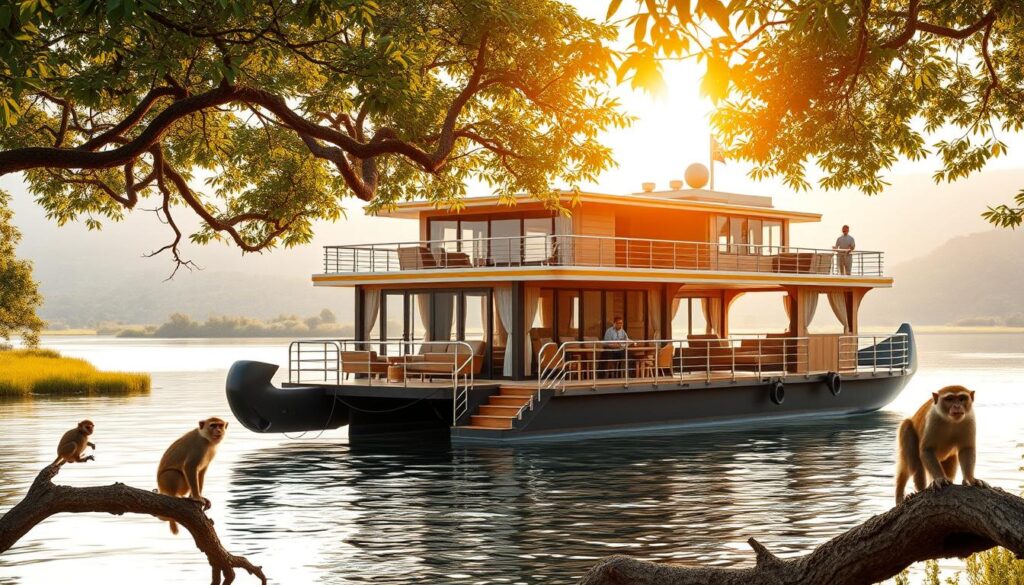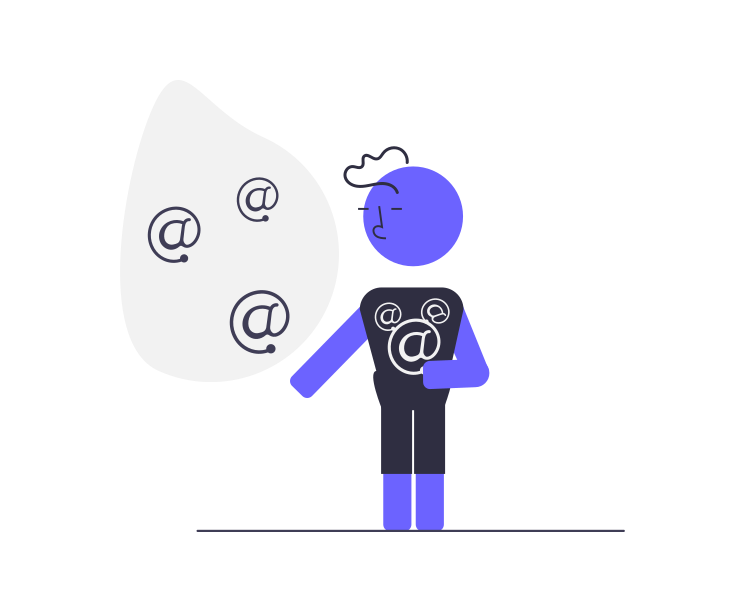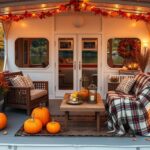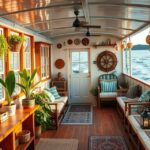
Table of Contents
Are you wondering where are the best houseboat vacations for wildlife viewing? Yes, Wildlife lovers will find houseboat tours a magical experience. These tours are a great way to see nature up close. Imagine sailing through clear waters, surrounded by wildlife and beautiful landscapes.
Aquatic wildlife safaris offer a special way to connect with nature. Unlike land tours, houseboat birdwatching lets you see animals in their homes. It’s a way to see wildlife without harming the environment.
The best houseboat trips for wildlife watching are both fun and green. You can see different places like coastlines and lakes. It’s a chance to make lasting memories while caring for nature.
Here we go.
Key Takeaways
- Unique wildlife viewing experiences from floating accommodations
- Access to remote and pristine natural environments
- Environmentally responsible travel option
- Close encounters with diverse wildlife species
- Comfortable and immersive nature exploration
- Opportunities for photography and conservation education
Understanding Houseboat Wildlife Tours: A Unique Way to Experience Nature
Riverboat wilderness expeditions offer a special way to see wildlife. They change how we experience nature. Houseboats take us deep into natural habitats, offering a new view of ecosystems.
Sustainable houseboating adventures give us unique chances to see animals. They let us move quietly through untouched places. This way, we don’t disturb the animals as much.
Benefits of Wildlife Viewing from Water
- Reduced environmental impact compared to land-based tours
- Ability to access remote and sensitive ecological zones
- Quieter approach allows for more natural animal behaviors
- 360-degree panoramic viewing opportunities
Types of Houseboats for Wildlife Observation
There are different houseboats for watching wildlife. Some are made for specific needs. They have:
- Open-deck platforms for unobstructed sightlines
- Silent electric propulsion systems
- Stabilization technology for smooth movement
- Camouflage-compatible exterior designs
Essential Equipment for Wildlife Spotting
To spot animals well on a houseboat, you need the right gear. Important items include:
- High-powered binoculars
- Telephoto cameras
- Field guides
- Noise-canceling observation gear
“Wildlife viewing from a houseboat transforms observation into an immersive journey of discovery.” – Nature Exploration Magazine
9 Best Houseboat Vacations for Wildlife Viewing
- Everglades National Park, Florida
- Alaska’s Inside Passage
- Great Lakes Region
- Gulf Coast of Florida
- Hawaiian Islands
- California’s Monterey Bay
- Mississippi River
- Lake Powell
- Canadian wilderness lakes
Top Destinations in North America
North America is a paradise for houseboat adventures. It offers stunning wildlife spotting and breathtaking waterway explorations. From coastal areas to inland waterways, houseboats provide a unique view for wildlife lovers.
The continent’s diverse ecosystems offer amazing wildlife viewing. Here are the top spots for unforgettable houseboat wildlife encounters:
- Everglades National Park, Florida:-This tropical wilderness is home to exotic wildlife like alligators, manatees, and many birds. Houseboat travelers can explore mangrove tunnels and remote waterways.
- Alaska’s Inside Passage:- The pristine waters here are perfect for seeing whales, sea lions, and bald eagles. The stunning landscape is great for wildlife photography.
- Great Lakes Region:- This area has freshwater ecosystems with diverse wildlife, including bald eagles, deer, and fish. Houseboats let you explore secluded bays and shorelines up close.
“Wildlife viewing from a houseboat transforms traditional nature observation into an immersive, extraordinary experience.” – Wildlife Conservation Society
Each place offers unique wildlife viewing chances. Travelers can connect deeply with nature while enjoying comfortable houseboats.
| Destination | Key Wildlife | Best Season |
|---|---|---|
| Everglades | Alligators, Manatees | Winter |
| Alaska | Whales, Sea Lions | Summer |
| Great Lakes | Bald Eagles, Deer | Spring/Fall |
Choosing the right spot depends on your wildlife interests and the season you prefer. Each location offers incredible nature cruises. They bring you closer to amazing wildlife in their natural homes.
Eco-Friendly Boating Practices for Responsible Wildlife Observation
Traveling sustainably on water means we must protect nature. River trips and houseboating need us to act responsibly. This way, we can see wildlife without harming the environment.
Keeping wildlife safe during our adventures is key. We must find a balance between exploring and caring for nature.
Sustainable Fuel Options
Today’s houseboats focus on green fuel:
- Electric propulsion systems
- Biodiesel alternatives
- Hybrid engine technologies
- Solar-powered boat configurations
Noise Reduction Techniques
We need to keep quiet to watch wildlife. Good ways to do this include:
- Choosing quieter engines
- Adding sound-dampening materials
- Driving slower and steadier
“Silence is the language of responsible wildlife exploration.” – Environmental Conservation Experts
Wildlife Distance Guidelines
Keeping a safe distance is crucial for wildlife:
| Wildlife Type | Recommended Minimum Distance |
|---|---|
| Marine Mammals | 100 meters |
| Nesting Birds | 50 meters |
| Large Aquatic Predators | 150 meters |
Responsible wildlife observation is about respect, conservation, and minimal environmental interference.
Planning Your Houseboat Wildlife Adventure: Seasonal Considerations
Planning a wilderness adventure needs careful timing, more so when traveling through aquatic habitats. The seasons greatly affect wildlife viewing, making them key for those who love sustainable tourism.
Wildlife migrations change with the seasons. Knowing these patterns can turn your trips into unforgettable nature experiences.
- Spring: Peak migration season for many bird species
- Summer: Abundant marine life and active wildlife behaviors
- Fall: Dramatic animal movement and preparation for winter
- Winter: Unique viewing opportunities for cold-adapted species
“Nature’s calendar is the most reliable guide for wildlife enthusiasts.” – Wildlife Conservation Expert
Different places have unique wildlife encounters by season. To get the most out of your trip, look into migration and breeding times for your destination.
| Season | Primary Wildlife Activity | Best Regions |
|---|---|---|
| Spring | Bird migrations | Great Lakes, Pacific Northwest |
| Summer | Marine mammal activity | Alaska, California Coast |
| Fall | Large mammal movements | Rocky Mountains, Canadian Border |
| Winter | Arctic species observation | Northern Minnesota, Alaska |
Wildlife photographers and nature lovers suggest booking your houseboat trip six months early. This ensures you get the best spots during peak seasons.
Pro Tip: Always check local wildlife management websites for the most current migration and breeding information specific to your chosen destination.
Marine Life Encounters: Coastal Houseboating Experiences
Coastal houseboat safaris are a great way to see marine ecosystems up close. These trips let wildlife lovers see animals in their natural homes. It’s a unique chance to explore the ocean from a houseboat.
Coastal areas offer amazing wildlife tours that make any trip special. You can see marine animals up close from the comfort of a houseboat. It’s a unique way to enjoy the ocean.
Dolphin Watching Hotspots
Dolphins are best seen in certain places. Here are some top spots:
- Gulf Coast of Florida
- Hawaiian Islands
- California’s Monterey Bay
Manatee Observation Areas
Manatees are interesting to watch in certain coastal spots:
| Location | Best Viewing Season | Typical Manatee Population |
|---|---|---|
| Crystal River, Florida | Winter (November-March) | 400-500 manatees |
| Blue Spring State Park | December-February | 300-350 manatees |
Sea Bird Sanctuaries
Coastal houseboating is great for bird watching. Birders can take amazing photos of sea birds during migration.
“The ocean is a wilderness of waves, where every moment brings a new discovery.” – Marine Exploration Journal
Wildlife experts say to choose houseboats with quiet motors. They also suggest being patient to see more marine life on these trips.
River and Lake Wildlife: Inland Houseboat Destinations

Inland waterways are great for seeing wildlife and enjoying eco-friendly boating. Rivers and lakes in North America offer special chances to see animals up close. These places turn regular trips into amazing wildlife adventures.
“The magic of inland waterways lies in their diverse ecosystems and unexpected wildlife interactions.” – Wildlife Conservation Expert
Birding cruises on rivers like the Mississippi and lakes in the wilderness show amazing wildlife homes. You can also try riverside glamping. It brings nature right to you.
- Mississippi River: Abundant waterfowl and migratory bird species
- Lake Powell: Diverse desert wildlife and scenic landscapes
- Canadian wilderness lakes: Pristine environments with multiple animal populations
It’s important to watch wildlife carefully and respect their homes. Guides can make your trip better by sharing their knowledge of animals and the environment.
| Destination | Wildlife Highlights | Best Viewing Season |
|---|---|---|
| Mississippi River Delta | Bald eagles, pelicans, waterfowl | Spring/Fall migration |
| Lake Powell | Bighorn sheep, desert birds | Early spring/Late autumn |
| Great Lakes Region | Loons, beavers, white-tailed deer | Summer months |
Choosing the right houseboat spot depends on what wildlife you want to see and when you go. Each waterway gives a special look into North America’s rich wildlife.
Photography Tips for Capturing Wildlife from Your Houseboat
Photography on houseboats lets you see wildlife in its purest form. These floating retreats offer special views for nature lovers. The moving platform brings both challenges and chances to capture wildlife.
Camera Equipment Recommendations
Choosing the right gear is key for great bird watching and wildlife photos. Experts suggest:
- Weather-sealed camera bodies
- Telephoto lenses (200-500mm range)
- Image stabilization technology
- Waterproof camera bags
Best Times for Wildlife Photography
For responsible tours, timing is everything. Wildlife photographers should aim for:
- Early morning (dawn) hours
- Late afternoon to sunset periods
- Seasonal migration windows
“The magic of nature photography lies in patience and understanding animal behavior.” – Wildlife Photography Expert
Shooting Techniques from a Moving Platform
Getting sharp wildlife photos from a houseboat needs special skills. Use fast shutter speeds, stabilize your gear, and guess animal moves. Keep your camera steady and track smoothly to avoid shake.
With practice, houseboat photography becomes an art. It lets adventurers capture amazing wildlife moments with skill and creativity.
Luxury Houseboats and Premium Wildlife Viewing Experiences
Experience top-tier floating eco-adventures that mix luxury with responsible wildlife watching. Premium houseboats give travelers a unique chance to see pristine water habitats. They also offer world-class amenities.

Luxury wildlife viewing houseboats have amazing features for your trip:
- Advanced observation decks with panoramic views
- Onboard professional naturalists and marine biologists
- High-end ecological tracking and wildlife identification technology
- Eco-friendly propulsion systems
“The ultimate wildlife experience combines comfort, education, and environmental consciousness.” – Marine Ecology Research Institute
Choose luxury houseboat destinations for unique marine exploration:
| Destination | Key Wildlife Features | Luxury Amenities |
|---|---|---|
| Florida Everglades | Manatees, Dolphins | Gourmet Kitchen, Private Suites |
| Alaska’s Inside Passage | Whales, Sea Lions | Hot Tub, Professional Guides |
| Great Barrier Reef | Tropical Marine Species | Personal Chef, Underwater Viewing Deck |
These premium floating eco-adventures offer an immersive and responsible way to watch wildlife. They ensure a great experience for guests while protecting the environment.
Safety Guidelines and Wildlife Viewing Etiquette
Waterborne nature expeditions need careful planning and respect for nature and wildlife. Safety is the top priority for those going on wetland houseboat excursions or coastal houseboating experiences.
Travelers who want to spot animals on riverboats must follow important safety rules. They also need to know how to interact with wildlife correctly.
Emergency Protocols for Water Travel
- Carry comprehensive first-aid kits
- Maintain communication devices with waterproof protection
- Learn basic water rescue techniques
- Understand marine emergency signaling methods
Weather Safety Considerations
Lakeside wildlife cruises require watching the weather closely. Always check the forecast before you go. Be ready for sudden changes in the environment.
| Weather Condition | Recommended Action |
|---|---|
| High Winds | Seek sheltered area immediately |
| Thunderstorms | Return to dock, avoid open water |
| Extreme Heat | Stay hydrated, use sun protection |
Wildlife Interaction Rules
When observing wildlife, keep a respectful distance and cause little disturbance. Maintain at least 100 feet from marine animals and never attempt to feed or touch them.
“Respect nature, and nature will respect you.” – Wildlife Conservation Expert
- Use binoculars for close observation
- Keep noise levels minimal
- Follow designated wildlife viewing guidelines
- Avoid sudden movements that might startle animals
Conclusion
Houseboat rentals for nature lovers open a special door to wildlife. You can see amazing animals in places like the Pacific Northwest and Florida. These houseboats let you see nature up close, making your trip unforgettable.
Choosing eco-friendly houseboat trips means you care about the planet. You get to see beautiful places without harming them. This way, you learn about nature while having fun.
Houseboating in wildlife areas is a new way to see animals. You might see bald eagles, manatees, or marine life. These trips are not just fun; they teach you about nature and inspire you to care for it.
Houseboat wildlife trips are perfect for those who want to travel with a purpose. They offer amazing experiences and help protect wildlife. You’ll see the beauty of our world and learn about it too.
FAQ
What Makes Houseboat Wildlife Vacations Unique Compared To Traditional Wildlife Tours?
Houseboat wildlife vacations offer a unique, eco-friendly experience. You can see animals in their natural habitat from a floating home.
This way, you get to see wildlife from all sides without disturbing them, making it better for the environment and animals.
What Types Of Wildlife Can I Expect To See On a Houseboat Vacation?
You might see dolphins, manatees, birds, and more, depending on where you go. Places like the Everglades, Alaska’s Inside Passage, and the Great Lakes are great for wildlife watching.
What Equipment Should I Bring For Wildlife Observation?
Bring binoculars, a camera with a long lens, guides, a waterproof notebook, and comfy clothes. Don’t forget sun protection and a GPS. Many tours also have special gear and guides.
How Do I Choose The Right Houseboat For Wildlife Watching?
Look for a houseboat with quiet engines and big windows. It should be stable and eco-friendly. Choose one with naturalists and special viewing areas for the best experience.
What Are The Best Seasons For Houseboat Wildlife Viewing?
Spring and fall are best for seeing animals because they’re most active. Some places have special times, like whale migrations or bird breeding.
How Can I Minimize My Environmental Impact During a Houseboat Wildlife Tour?
Keep a safe distance from animals, use eco-friendly products, and avoid loud noises. Don’t feed wildlife and follow tour rules to protect habitats.
Are Houseboat Wildlife Tours Suitable For All Experience Levels?
Yes, they’re for everyone, from beginners to wildlife photographers. Guides help all levels enjoy and learn about wildlife.
What Safety Precautions Should I Take During a Houseboat Wildlife Vacation?
Wear life jackets, know emergency plans, and check the weather. Bring first-aid kits and follow guide instructions for a safe trip.
How Long Do Typical Houseboat Wildlife Tours Last?
Tours can be short or long, from 2-3 days to 7-14 days. It depends on where you go and how long you want to stay.
What Is The Typical Cost Of A Houseboat Wildlife Vacation?
Prices vary from $1,500 to $10,000. It depends on where you go, the houseboat, and how long you stay. There are options for all budgets.




Pingback: Travel Insurance Tips for Houseboat Vacations oceangrandeur.com